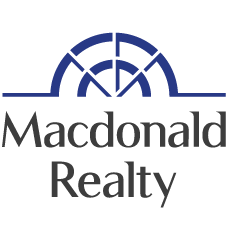As a living organism, mold requires food and water to maintain life. Add warmth to the mix, and it thrives, growing outdoors as well as indoors.
With winter comes the need for heat and, often, the intrusion of moisture into our homes – the ideal conditions for mold growth.
Let’s take a look at ways to avoid a moldy home and what to do if you find an infestation.
Mold isn’t just ugly

Although various types of mold are present in outdoor air and soil, it’s the mold in our homes that makes us sick.
Common health symptoms caused by a mold infestation are similar to those one exhibits with the flue and allergies:
- Headache
- Asthma and other respiratory symptoms
- Fatigue
Scientists have learned that mold in a home may cause asthma in adults and children who previously didn’t suffer from it.
The effects of black mold (Stachybotrys chartarum, also called “toxic mold”) may be even more harmful if you are asthmatic or otherwise sensitive to mold
Prevent mold in the home
Keeping excess moisture under control is the name of the game in mold prevention in the home. Before winter arrives, conduct a home inspection:
- Gutters and downspouts – Ensure they drain away from the home’s foundation.
- Siding – Look for cracks that may allow moisture intrusion.
- Washing machine, dishwasher—Check that there are no leaks.
- Under the sinks – Again, check for signs of leaks and fix any you find.
- Check the ceilings and walls for water stains.
- Check the basement for signs of water intrusion.
- Does condensation form more heavily on certain windows?
After you’ve remedied the obvious sources of moisture in the home, take some additional preventive measures.
- Use the fan in the bathroom during every shower and ensure the rest of the family develops the habit as well.
- Consider installing additional insulation in the home. Well-insulated walls can prevent condensation and mold, as well as cut down on your heating and cooling bills.
- Consider purchasing a dehumidifier for the basement and that you keep the humidity level in the home below 40 percent.
- Finally, “cover the soil in the crawl space with waterproof polyethylene plastic, also called a vapor barrier,” adding that if the space is vented, keep the vents closed in the summer and open in the winter.
How to detect mold
One of the most common symptoms of a mold infestation is a musty odor, akin to that of old books. You might also find spotting on fabrics, allergy or asthma flare-ups, and a persistent cough or cold symptoms.
Follow your nose to find the mold. Check anywhere in the home that has been exposed to water leaks, such as near the water heater.
How to remove mold in the home
When you locate the source of the mold, it’s time to decide if you can safely kill it yourself or if you need to hire a professional.
Health Canada recommend bringing in a pro if the infestation covers more than 10 square feet.
If you decide to take the DIY route, you’ll need the following:
- Rubber boots, an N-95 face mask, goggles and gloves
- Household bleach solution (1 cup in 1 gallon of water)
- Bucket
- Sponge, mop and, possibly, a stiff-bristled scrub brush
Keep the following safety tips in mind:
- Never mix bleach and ammonia or products that may contain ammonia – the combination produces a toxic gas.
- Ensure that windows and doors are open to ventilate the bleach fumes.
- Use the scrub brush for mold growing on cement or outside walls.
- When finished, remove your clothing and immediately launder in hot water.
Don’t attempt to clean upholstered items or any others that won’t dry quickly. Throw them away if they have any signs of mold. The same goes for carpet (including the padding).
About the Author:

It’s winter Kits – Here comes the mold was provided by Regan Pyke, a Vancouver Realtor and a leader in the field of sales, marketing, and real estate investing. Regan can be reached via email at [email protected] or by phone at 778-228-2448.
Thinking of buying or selling your Vancouver West, Kitsilano home, or Condo? I have a real passion for buying and selling Real Estate, as well as marketing & real estate investing. I’d love to share my expertise!


